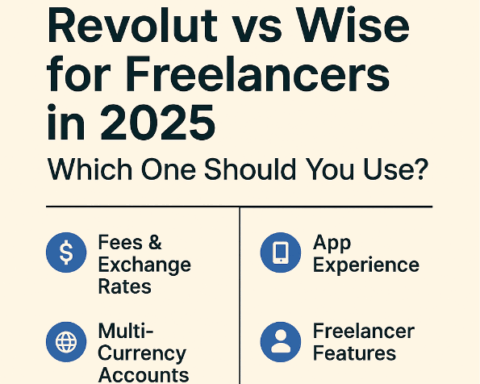The Algorithmic Shaping of Knowledge: From Scientific Uniformity to Digital Islamophobia
The evolution of scientific thinking—from the philosophical dialogues of Ancient Greece to the intellectual liberation of the Renaissance—was a process nurtured by pluralistic debates. Galileo’s revolutionary ideas about the Earth’s motion, for instance, challenged the dogmas of his time, yet gradually gained acceptance within scientific circles. Today, however, the landscape of knowledge production has shifted dramatically. Academic indexing systems like Google Scholar and PubMed, alongside metrics such as impact factor, citation count, download rate, or university rankings, have introduced a form of algorithmic filtering that prioritizes quantitative indicators. This prioritization, while improving efficiency and access, inadvertently reduces the visibility of interdisciplinary research or theories outside the mainstream.
But is this phenomenon limited only to scientific knowledge?
Far from it. These same algorithmic mechanisms now exert dominance over societal and religious discourse as well. Digital content related to Islam, for example, is often shaped and filtered through algorithmic systems. A simple search for “Islam” on YouTube can lead users—often without conscious intention—into a spiral of videos that frame Islam through the lens of radicalism or so-called “Islamic terrorism.” While such recommendations may not be purposefully biased, they create a systemic effect: Islam frequently appears as a threat in the digital imagination.
The Intersection of Algorithmic Systems and Digital Hate Speech
The issue of homogeneity driven by algorithms and performance metrics in academia finds a parallel in the social media ecosystem, albeit in a more dangerous form. Platforms like Facebook, TikTok, Twitter, and YouTube use complex algorithms to maximize user engagement, typically by surfacing content that receives the most reactions—clicks, likes, comments, or shares. However, the content that elicits the strongest reactions is not always informative or constructive. More often, it is provocative, polarizing, or infused with hatred. As a result, algorithms may unintentionally amplify divisive rhetoric and extreme ideologies.
When examining the representation of Islam on digital platforms, one observes a persistent pattern of negative framing—a reflection of long-standing prejudices and geopolitical narratives. For decades, the “war on terror” discourse has paired Islam with terrorism, a linkage that continues to echo online. Algorithms, drawing from a biased reservoir of content, keep recommending similar material. A user who watches a political video related to Islam may soon be shown more radical content. In the wake of the 2019 Christchurch mosque attack in New Zealand, for instance, one of the most prominent search results for the word “Muslims” on YouTube was a video falsely claiming that most Muslims are radical. YouTube’s autoplay then queued up conspiracy content and videos promoting the notion that “Islam must be destroyed.” A media analyst described this phenomenon as a “perfect echo chamber”—repetitive exposure makes an idea seem more credible, and users become more likely to accept even false narratives simply through repetition.
This problem is not exclusive to YouTube. Similar algorithmic dynamics operate across platforms. The common denominator is their shared goal: to keep users engaged for as long as possible. Unfortunately, extreme views, conspiracy theories, and hate speech often trigger more interactions than moderate or balanced content, granting them algorithmic advantage. In academic discourse, this phenomenon is referred to as “algorithmic echo chambers” or “filter bubbles”—the algorithm creates a content environment that not only reinforces users’ pre-existing beliefs but also exposes them to more radical iterations of those views. A Facebook user who engages with anti-Islam posts might be steered toward similar groups and pages, leading to an increasingly intense exposure to Islamophobic narratives. This feedback loop transforms digital hate from a marginal discourse into a self-reinforcing cycle.
The association of Islam with terrorism has become an almost normalized prejudice in the digital realm. The mainstream media and popular culture have long perpetuated damaging generalizations such as “Muslim = terrorist,” and digital content creators frequently exploit this for clicks and views. Through what could be called digital demonization, Muslim communities are systematically portrayed as threats. This oversimplified narrative reduces Muslims to potential terrorists in the public imagination. Consequently, especially in Western societies, many ordinary users come to associate Islam with violence and extremism. Ignorant generalizations—that all Arabs are radical Islamists or terrorists—are repeated so often that they begin to be perceived as truth by the broader public. The result is alienation, fear, and the stigmatization of entire populations.
Algorithms play a catalytic role in this process. Social media acts as a magnifier in the construction of reality, shaping public perception through repetition, symbols, and slogans. Themes like “Islam is taking over Europe” or “Muslims are a threat to national security” may begin as fringe conspiracy theories, but thanks to algorithms, they can rapidly gain visibility and become mainstream narratives. Platforms designed to measure user reactions have thus, at times unknowingly, become megaphones for hate speech. Reports from organizations like Amnesty International reveal how Facebook’s algorithms fueled anti-Rohingya sentiment in Myanmar, inciting violence against the Muslim minority. In India, similar mechanisms have been linked to Islamophobic rumors spread via WhatsApp and Facebook, which have, in some cases, led to lynchings. These examples highlight the destructive potential when algorithmic systems intersect with toxic content. Just as algorithms influence what is seen in scientific knowledge production, they now determine the visibility of ideas in the digital public sphere—with consequences that include the amplification of disinformation and hate.
The self-reinforcing nature of recommendation algorithms plays a central role in the spread of digital Islamophobia. When a user reacts to Islamophobic content—whether positively or negatively—the algorithm interprets it as a signal of interest and serves up more of the same. Over time, this leads to overexposure to biased content and hardens user opinions. The end result is a kind of alternate digital reality, one in which the idea that “Muslims are dangerous” becomes normalized through sheer repetition.
Examples of Digital Islamophobia: YouTube, TikTok, Twitter
To understand how algorithmic systems can practically elevate Islamophobic content, it is useful to examine concrete examples. Analyses conducted over recent years on major social media platforms reveal alarming trends:
YouTube Case Study
YouTube has long been criticized for its recommendation algorithm, which often guides users toward increasingly extreme content. This so-called “rabbit hole effect” has been particularly evident in topics related to Islam and immigration. Numerous anecdotes describe how a user starting with a moderate discussion video can quickly find themselves watching content by conspiracy theorists and far-right propagandists.
As mentioned earlier, even in the immediate aftermath of the Christchurch mosque massacre in 2019, YouTube’s algorithm remained largely unchanged. Just hours after the attack, a user searching for “Muslims” was presented with one of the most-watched videos on the topic—a clip falsely claiming that most Muslims are radical, devoid of any scientific basis (source: CounterExtremism.com). The video had garnered millions of views. Worse still, the autoplay feature queued up a series of similarly aggressive videos, many of which purported to “expose” Islam or denounced it with inflammatory rhetoric. The algorithm created a kind of echo chamber, offering no pause for reflection.
One young user recounted how watching a relatively balanced debate between Bill Maher and Ben Affleck on Islam led YouTube to recommend videos by Paul Joseph Watson, known for his anti-Islam conspiracy theories. From there, the recommendations escalated into even more “sinister” content. Although the user later rejected these views, he admitted that YouTube’s suggestions had nudged him toward far-right ideology during a formative period in his life. This is a textbook example of how YouTube’s algorithm can act as a radicalizing force.
In response to growing criticism, YouTube began in 2019 to reduce the recommendation of videos containing “harmful misinformation.” The platform even claimed to have decreased the rate at which conspiracy videos appear in recommendations by more than 50%. However, these measures remain controversial, and the platform can hardly be said to be free of such content. Islamophobic narratives still circulate, often shielded under the guise of “free speech.” In essence, YouTube’s popularity-based algorithm has at times helped mainstream anti-Islam discourse.
TikTok Case Study
TikTok, the short-form video platform popular among younger audiences, faces similar challenges. Known for its powerful discovery algorithm and rapid content cycling, TikTok has become a fertile ground for viral content—including hate speech. In 2021, the Institute for Strategic Dialogue (ISD) published a report analyzing far-right and hate content on TikTok. The findings revealed significant gaps in content moderation and showed that antisemitic and Islamophobic videos could easily garner millions of views.
Old ethnic and religious conflicts were revived in new forms. For example, videos denying or glorifying the 1995 Srebrenica genocide against Bosnian Muslims were widely shared. One such clip, cited in the ISD report, was used to support conspiracy theories about the supposed “Islamization of Europe.” These videos echoed xenophobic themes like “Europe is being systematically taken over by Islam,” and spread fear that the white population was under existential threat.
Most disturbingly, ISD documented over 30 TikTok videos that praised Brenton Tarrant, the terrorist who killed 51 Muslims in Christchurch. More than 10 of these featured footage captured by the attacker himself. Some content even recreated the massacre using video game graphics and received millions of views. Although TikTok publicly claims to prohibit hate speech under its community guidelines, researchers have identified hundreds of videos that glorify or normalize anti-Muslim sentiment.
This suggests that short-form algorithms, capitalizing on users’ fast-scrolling habits, can easily disseminate hate speech that evades moderation. Moreover, TikTok’s visual effects and trendy music often lend such videos an aesthetic polish, increasing their appeal among young viewers. Some extremist clips, for instance, use nostalgic filters to romanticize the “good old days without diversity,” subtly instilling anti-multicultural sentiment.
In conclusion, the TikTok case demonstrates that next-generation platforms are not immune to Islamophobic rhetoric. On the contrary, their algorithms can elevate such content in creatively disguised ways.
Bots, Fake News, and Twitter (X): The Engineered Spread of Digital Islamophobia
Digital Islamophobia is not solely a product of organic user bias—it is also significantly fueled by coordinated campaigns, bot networks, and disinformation strategies. Particularly on Twitter (now X), the late 2010s saw a rise in politically motivated bot activity aimed at manipulating public opinion. These networks used fake accounts to push specific hashtags into trending lists, disseminate false information en masse, and shape perceptions on controversial topics. Islamophobic propaganda has been one of the key targets of these tactics.
The Role of Bots and Coordinated Troll Networks
Evidence from the 2016 U.S. presidential election revealed how Russian-linked troll accounts simultaneously promoted both anti-Islam and hyper-Islamic content to deepen societal divisions. The aim wasn’t to support one side but to heighten polarization. A similar pattern emerged in India, where coordinated troll farms operated like digital propaganda arms for Hindu nationalist circles. These networks frequently circulated fake news that demonized the Muslim minority, often with severe real-world consequences.
Case Study: COVID-19 and “Corona Jihad”
A striking example of this weaponized disinformation occurred during the COVID-19 pandemic. In India, conspiracy theories alleging that “Muslims were deliberately spreading the virus” went viral on social media and WhatsApp. The phrase “Corona Jihad” became a trending term, rooted in the scapegoating of a single Islamic congregation held in Delhi in March 2020, which was falsely depicted as a super-spreader event. Similar gatherings—religious and secular—also contributed to early virus transmission, but digital troll networks disproportionately targeted the Muslim group, accusing them of “betraying the nation.”
Fabricated videos and manipulated footage were circulated on Facebook and Twitter, including false claims that Muslims were spitting on people to spread COVID-19. The consequences were violent: In April 2020, a 22-year-old Muslim man in a village near Delhi was lynched by a mob who accused him of trying to “infect Hindus.” The attackers beat him and forced a false confession that he was part of a “Corona Jihad” conspiracy. It was later confirmed that the accusation was entirely based on social media rumors. In this case, digital Islamophobia incited real-world violence—a brutal reminder of how fake news and conspiracy theories can rapidly mobilize hatred.
Europe saw similar patterns: during lockdowns in the UK, some far-right groups spread baseless claims online that “Muslims are defying quarantine orders and gathering in mosques,” reinforcing anti-Muslim sentiment and promoting xenophobic narratives.
Hashtag Poisoning and Trend Manipulation on Twitter
Another common tactic employed by Twitter bots is hashtag poisoning and trend manipulation. Hashtags such as #StopIslam—overtly Islamophobic in nature—have been artificially pushed into global trends through coordinated mass tweeting from fake accounts. These campaigns often include links to fabricated news stories alleging crimes by Muslim immigrants or conspiratorial claims of Islamic “takeovers.”
A study found that Instagram accounts using the #StopIslam hashtag frequently posted memes, fake news, and spam to flood the platform with hate content. Even when these accounts were reported and removed, new ones would quickly take their place, resuming the cycle. In such an environment of constant disinformation, it becomes increasingly difficult for ordinary users to distinguish between fact and fiction.
This reveals that digital Islamophobia is not just the product of unconscious bias—it is a systematically produced and distributed phenomenon. Technology companies’ moderation policies often fail to keep up with the speed and scale of these campaigns. Worse, platforms may apply these rules inconsistently, especially when polarizing content drives user engagement and, by extension, revenue.
The Political Instrumentalization of Islamophobia
Finally, it is essential to address the political instrumentalization of digital Islamophobia. In various regions, Islamophobia has been deployed as a digital weapon to serve ideological ends. In Europe, far-right parties have capitalized on anxieties around immigration and integration, running anti-Muslim campaigns across social media. In France, the National Rally (formerly the National Front) has consistently used the narrative of “resisting Islamization” to galvanize its base online.
In the U.S., the Trump campaign notoriously retweeted anti-Muslim videos during his presidency—including footage from a British far-right group portraying Muslims as inherently violent. Such acts reflect how digital hate speech has not only been tolerated but also amplified by high-level political figures. This legitimization further embeds Islamophobia in the public sphere.
From Utopian Connectivity to Dystopian Echoes
What we witness today is the stark reversal of the early internet’s promise to bring cultures closer together. Instead, poorly governed algorithms and the commodification of attention have created a dystopia where fear and hatred spread virally. Whether driven by individual bias, algorithmic echo chambers, or coordinated bot networks, digital Islamophobia has become a tangible force shaping global discourse.
The responsibility now falls on both tech companies and civil societies to rethink how algorithmic systems are designed and regulated. Without accountability, the digital realm will continue to amplify division, misinformation, and hatred—with devastating consequences in the real world.
The Political Instrumentalization of Islamophobic Discourse in the Israel-Palestine Context
One of the most prominent domains where digital Islamophobic discourse is deployed is in the propaganda narratives surrounding political conflicts in the Middle East—particularly the Israeli-Palestinian conflict. In this context, Islamophobia has become a rhetorical tool frequently used to influence international public opinion. Various actors—ranging from Israeli state institutions and extremist Zionist groups to Western right-wing populists and coordinated online troll armies—have engaged in deliberate disinformation campaigns. The primary objective is to delegitimize Palestinian demands for justice by framing Palestinian resistance within the global terrorism paradigm, thereby justifying Israeli policies under the guise of counterterrorism.
Since the post-9/11 era, the global “war on terror” discourse has been strategically adapted by Israel to its own narrative. Palestinian groups—most notably Hamas, which governs Gaza—have been equated with global jihadist organizations, effectively rebranding the Palestinian struggle as an extension of “radical Islamic terrorism.” This framing has enabled Israeli governments to present their military actions in Palestinian territories as acts of self-defense and counterterrorism. Western media often adopted this narrative, framing Israeli operations through a security lens while downplaying or ignoring the structural injustices faced by Palestinians.
A recent example came in the wake of the October 7, 2023 Hamas attack, after which Israel launched a retaliatory military campaign on Gaza. Despite thousands of civilian casualties, including children, many mainstream Western outlets continued to present Israel’s response as part of its “right to self-defense,” while voices advocating for Palestinian rights were often branded as terrorist sympathizers or accused of antisemitism. A May 2024 report by Georgetown University’s Bridge Initiative highlighted how Western media coverage of university protests in solidarity with Palestine revealed a deeply Islamophobic tone. The report identified three recurring media tropes:
-
“All Palestinians are Hamas” – reducing the entire Palestinian population to a collective of terrorists.
-
“Anyone who supports Palestine is a potential extremist” – branding global activists as radical Islamists.
-
“Defending Palestinian rights is antisemitic” – dismissing legitimate human rights advocacy as hate speech.
These narratives illustrate how Islamophobic and racist stereotypes are politically weaponized. Palestinians are collectively criminalized based on their ethnic and religious identity, and their supporters are systematically delegitimized.
Digital Media as the Frontline of Perception Warfare
Digital platforms have become the central battlefield for this perception war. Organized online campaigns systematically promote pro-Israel and anti-Muslim narratives. A striking example emerged in July 2024 when Al Jazeera uncovered a large-scale disinformation operation funded by Israel’s Ministry of Diaspora Affairs. The campaign was launched shortly after the October 7 Hamas attack and targeted U.S. political circles by spreading Islamophobic content across social media.
According to the report, the Israeli government allocated $2 million to Tel Aviv-based marketing firm Stoic, which used artificial intelligence to mass-produce misleading content distributed via fake accounts. Researchers identified hundreds of inauthentic accounts on Facebook, Instagram, and X (formerly Twitter), operating under names like “Moral Alliance,” “Unfold Magazine,” and “Non-Agenda.” These accounts mimicked independent media voices but engaged in coordinated efforts to circulate pro-Israel content and copy-paste identical messages to targeted individuals. While appearing diverse, the messaging came from a single command center, simulating a grassroots media ecosystem that did not exist.
More concerningly, the campaign didn’t stop at defending Israel’s actions—it also disseminated overtly Islamophobic content. It strategically tapped into far-right, anti-Muslim sentiments in Western societies. For example, a fake website posing as a Canadian civil society initiative—United Citizens for Canada—published articles labeling Muslim immigrants as a threat to national security. This exemplifies how Israeli-linked influence operations are not confined to defending national interests but are also contributing to the global spread of Islamophobia in pursuit of geopolitical goals.
From Narrative Framing to Global Consequences
In sum, the weaponization of Islamophobic discourse—whether through algorithmic biases or orchestrated disinformation—has become an entrenched feature of modern geopolitical propaganda. What was once the utopian promise of the internet to foster intercultural understanding has, due to unregulated algorithmic systems and state-driven perception management, been replaced by a dystopia of fear and hatred.
This reality imposes an urgent responsibility on technology companies and democratic societies alike: to ensure greater accountability in the design, governance, and ethical oversight of digital information systems. Without such measures, the digital battlefield will continue to serve as a megaphone for racialized propaganda and manufactured polarization—with dangerous consequences both online and offline.
Islamophobia as a Political Tool in the Israel-Palestine Conflict
An increasingly prominent arena for the use of digital Islamophobic discourse is the propaganda dimension of political conflicts in the Middle East—particularly the Israel-Palestine conflict. In this context, Islamophobia has become a strategic rhetorical device aimed at shaping international public opinion. Multiple actors—Israeli state institutions, extremist Zionist groups, far-right populist movements in the West, and coordinated online troll networks—have all participated in deliberate disinformation campaigns. Their collective goal is to delegitimize Palestinian demands for justice by framing Palestinian resistance as part of the global terrorism threat, thereby justifying Israel’s policies and military actions.
Since the post-9/11 era, the global “war on terror” narrative has been strategically adapted by Israel. Palestinian groups, especially Hamas—the governing authority in Gaza—have been presented as equivalents to Al-Qaeda or ISIS. This equivalence has allowed successive Israeli governments to frame their military operations in Palestinian territories as self-defense and counterterrorism. Western media has often mirrored this framing: while Israeli actions were presented through the lens of security, Palestinian grievances and injustices were downplayed or ignored. The pattern repeated after the October 7, 2023 Hamas attack and Israel’s subsequent offensive in Gaza, during which thousands of civilians, including children, were killed. Yet many mainstream Western media outlets framed Israel’s response as a legitimate exercise of its right to self-defense, while those voicing solidarity with Palestinians were smeared as terrorist sympathizers or accused of antisemitism.
A report published in May 2024 by Georgetown University’s Bridge Initiative revealed a marked Islamophobic tone in Western media coverage of pro-Palestinian university protests. The report highlighted three recurring media tropes:
-
“All Palestinians are Hamas” – branding all Palestinian civilians as terrorists.
-
“Anyone who supports Palestine is a potential extremist” – portraying global solidarity movements as radical Islamist fronts.
-
“Defending Palestinian rights is antisemitic” – discrediting human rights advocacy by labeling it as anti-Jewish.
These tropes expose how Islamophobic and racist prejudices are exploited politically to dehumanize Palestinians and criminalize their supporters.
The Far-Right-Israel Alliance: A Strategic Convergence
What is particularly striking is the growing alliance between Israel and far-right movements in Europe and the United States. For years, Islamophobic populists in the West have viewed Israel as an ideological ally. They exploit Israel’s conflict with Islamist groups to justify their own hostility toward Muslim minorities at home. Ironically, many of these far-right parties have antisemitic roots, yet they do not hesitate to align with Israel. In July 2024, Israel’s Minister for Diaspora Affairs, Amichai Chikli, openly endorsed French far-right leader Marine Le Pen—an event analysts see as indicative of a growing transnational alliance between global Zionism and global ultranationalism. The common denominator is a shared hostility toward Islam and Muslim presence.
Far-right leaders cite Israel’s anti-terror rhetoric to legitimize their Islamophobic agendas, while some Israeli right-wing politicians engage with these forces to secure international political support. Islamophobia, in this context, functions as a form of geopolitical glue—used both to justify Israel’s policies in Palestine and to inflame xenophobia and nationalism in the West.
Framing Resistance as Terrorism: Digital Media as a Weapon
A recurring theme in digital media content is the deliberate conflation of Palestinian resistance with global jihadist groups. Common slogans on social media include: “Hamas = ISIS,” “There are only terrorists in Gaza,” and “If you say ‘Free Palestine,’ you support terrorism.” Such messaging erases historical and political context, reducing the conflict to a simplistic “clash of civilizations” narrative. Though war propaganda has always drawn on religious and ethnic themes, in the case of Israel-Palestine, Islamophobia has become a particularly potent psychological weapon—activating pre-existing fear and prejudice in Western societies.
As a result, pro-Israel groups not only shield Israel from international criticism but also deepen suspicion toward Muslim communities globally—simultaneously easing pressure on Israeli policy and advancing far-right agendas.
Modern Troll Warfare: The Stoic Campaign and Astroturfing
Returning to the issue of troll networks: the campaign executed by the Israeli-linked firm Stoic is a modern case study in astroturfing—the practice of creating a false appearance of grassroots consensus. Using hundreds of fake profiles and AI-generated content, the campaign manufactured the illusion of widespread support for Israel’s actions. This disinformation operation included the mass distribution of speculative claims, such as accusations that UNRWA employees were complicit in the October 7 attacks. Identical messages were sent en masse to targeted politicians, giving the impression of overwhelming consensus. The repetition of such content—word-for-word—was designed to create doubt and manipulate perception.
Beyond technical manipulation, the normalization of Islamophobic language through official narratives is deeply concerning. In several Western countries, official statements responding to pro-Palestinian protests have framed these demonstrations as “potential antisemitic threats,” especially when Muslim students are involved. Peaceful, rights-based activism has been painted as a national security risk. Islamophobia, in these cases, serves as a convenient tool to suppress dissent and marginalize solidarity. While the threat of antisemitism is real and must be taken seriously, the problem arises when legitimate criticism of Israeli policy is automatically dismissed as antisemitic. This double-bind—weaponizing both Islamophobia and antisemitism—poisons the discourse and obstructs meaningful dialogue.
Conclusion: A Multi-Layered Strategy of Suppression and Delegitimization
In the context of the Israel-Palestine conflict, Islamophobic discourse operates as a multi-layered political instrument. Locally, it dehumanizes Palestinians; internationally, it criminalizes solidarity with Palestine; and broadly, it reinforces a civilizational narrative that equates Islam with terrorism. The digital spread of this discourse reflects both the promise and peril of our information age. While the internet has enabled marginalized voices to reach global audiences, it also empowers dominant actors to disseminate falsehoods with speed and scale.
Algorithms and trolls, if left unchecked, become fog machines—obscuring truth and amplifying propaganda. Recent global protests with slogans like “No to Islamophobia, No to War,” such as the 2021 demonstration in London, signal a growing recognition that Islamophobia is not just a Muslim issue—it is a threat to peace, justice, and democratic discourse everywhere.
As algorithmic systems play an ever-expanding role in shaping what we know and how we think, we must confront their unintended consequences. Just as citation-based metrics can suppress creativity in academia, engagement-driven algorithms on social media can create feedback loops of polarization and hate. When Islamophobic content is rewarded by these systems, a toxic synergy emerges—with repercussions that extend from online harassment to real-world violence.
by Hayati Esen In 2012, his essays on theology, politics and art were published in various magazines and newspapers.
Sources:
-
International Science Council (ISC) – The Future of Research Assessment report (Turkish summary)
tr.council.science -
Scholarly Kitchen – “Old PhDs and the Matthew Effect” by Kent Anderson (2010)
scholarlykitchen.sspnet.org -
Springer “Postdigital Science and Education” – Analysis of relevance ranking in academic search (2024)
link.springer.com -
MIT Sloan – “Industry now dominates AI research” (2023)
mitsloan.mit.edu -
JusCorpus – “Social Media Algorithms in Fuelling Islamophobia” (2024)
juscorpus.com -
MDPI – “Demonization of Islam in Digital Media: The Case of #StopIslam on Instagram” (2020)
mdpi.com -
Counter Extremism Project – Quoting Huffington Post: “YouTube Still Recommending Islamophobic Videos After NZ Massacre” (2019)
counterextremism.com -
MPower Change – “YouTube: Stop promoting Islamophobia” campaign text (2019)
act.mpowerchange.org -
Religion News – Report on Antisemitic and Anti-Muslim Content on TikTok (2021)
religionnews.com -
Instagram #StopIslam content analysis – Findings from MDPI study (2020)
mdpi.com -
The Guardian – “COVID Conspiracy Theories Targeting Muslims in India” (2020)
theguardian.com -
Middle East Monitor – “Israel-Backed Islamophobic Disinformation Campaign” (July 2024)
middleeastmonitor.com -
Middle East Monitor – “Islamophobia Unites Israel and Europe’s Far Right” (July 2024)
middleeastmonitor.com -
Bridge Initiative (Georgetown University) – “Islamophobia and Coverage of Palestinian Protests in Western Media” (May 2024)
bridge.georgetown.edu
- Tension Between Donald Trump and Elon Musk: Is a Major Crisis Beginning in the American System? - June 6, 2025
- Harvard Faces Federal Funding Freeze Over Alleged “Disrespect to the Nation,” Says McMahon - May 6, 2025
- Tariffs, Troubles, and Transition: A Tumultuous Week for the U.S. and NYC Economy - May 6, 2025










